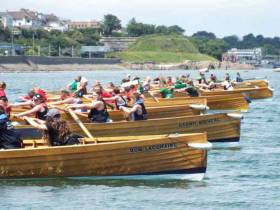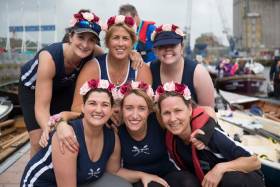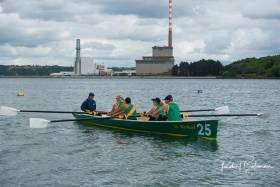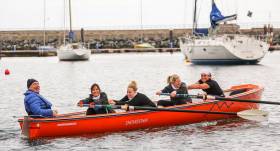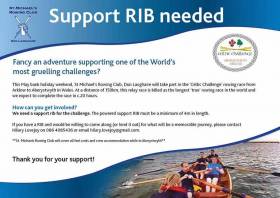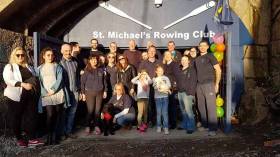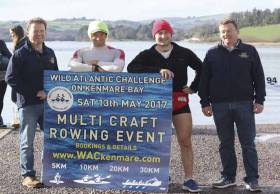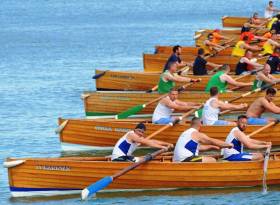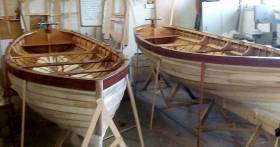Displaying items by tag: Coastal Rowing
2018 East Coast Rowing Fixtures Published
Following yesterday’s AGM of the East Coast Rowing Council, the fixture list for their 2018 regatta season has been released. (Downloadable below). Crews of men, women, and children from Skerries in the north to Arklow in the south will compete for the individual regatta medals and trophies, for the championship league positions, and for the overall club shields.
In a departure from tradition, which is that regattas are held on a Sunday unless there is a bank holiday, the fixture list includes a Saturday Regatta in June. It is relative newcomers Skerries Rowing Club, established in 2012, that have taken this bold move. Holding with tradition, the 140th Wicklow Regatta will be held on the August Bank Holiday Monday
Regattas are held on the ‘home’ courses of each club., on the bays, estuaries, and open water of the east coast of Ireland. All regattas feature races from Under 12s through to Senior Men and Senior Women, with 5-12 boats per race and up to 13 races spread over the afternoon.
Last year was a hugely busy and successful year on the East Coast, with the St. Michael’s Regatta in Dun Laoghaire falling just 2 crews short of the all-time record for entries, which was set at the 2017 Wicklow Regatta at 125 crews. In terms of results, the two Ringsend clubs managed to share the overall season’s spoils between them, with Stella Maris taking the Junior Shield, and St. Patrick’s taking both the Senior Shield and the Overall Shield.
Clubs can look forward to strong growth over the coming year, with new builds for 7 East Coast skiffs having been awarded grant aid in the 2017 round of Sports Capital Grants. With these boats being unique to Dublin and Wicklow, the growth of the fleet is a source of pride for all who row these fine boats.
The River Lee was filled with colour, excitement and drama with over 30 different types of boats all competing in Ocean to City – An Rás Mór on Saturday 10 June. Ireland’s premier coastal rowing race had to make a significant course change last week due to the high winds predicted for Saturday, and the resultant Sheltered River Race was a resounding success.
Joya Kuin, Festival Manager said, “We were all put to the test this year having to change the race route at such short notice to the Sheltered River Course, due to weather conditions. Luckily our team of volunteers and supporters all rose to the challenge and succeeded in delivering not just a safe event – but also one that was challenging, competitive and enjoyable for all our participants. The atmosphere was absolutely electric at the finish line and it was fantastic to see so many happy faces after the tough race.”
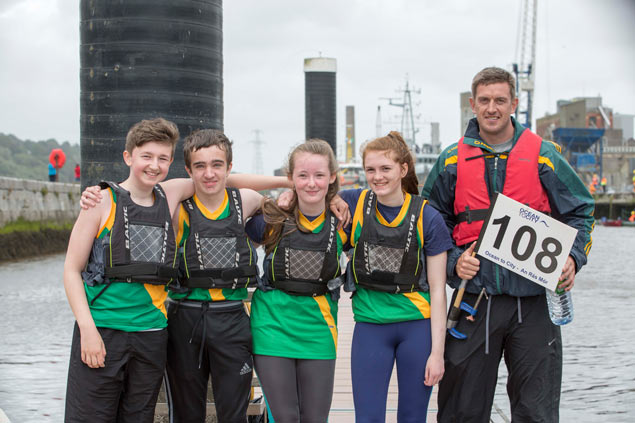 Blackrock Rowing Club Youth Crew
Blackrock Rowing Club Youth Crew
Over 600 participants in 200 boats took to the water at Port of Cork to race a river route along the north shore to Blackrock Castle, and passing back on the southern shore along the Marina to the finish Line at Lapp’s Quay, with most boats doing two laps. Crews participated across a range of classes, from juniors to veteran participants; rowers and paddlers from all over Ireland, England, Wales, The Netherlands and the US. Competition was intense due to the confined space of the course, which added to the excitement and enjoyment for spectators and participants alike.
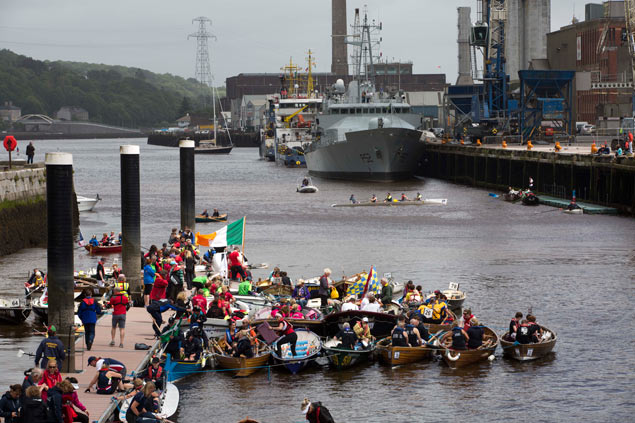 Boats at the Port of Cork finish line on the River Lee
Boats at the Port of Cork finish line on the River Lee
Ocean to City – An Rás Mór, the flagship event of Cork Harbour Festival is organised by Meitheal Mara, the community boatyard, training centre and charity located in the heart of Cork City. The Festival is sponsored by Cork City Council, Cork County Council, Port of Cork, Failte Ireland and MaREI, and made possible with the help of dozens of Event Partners and hundreds of volunteers.
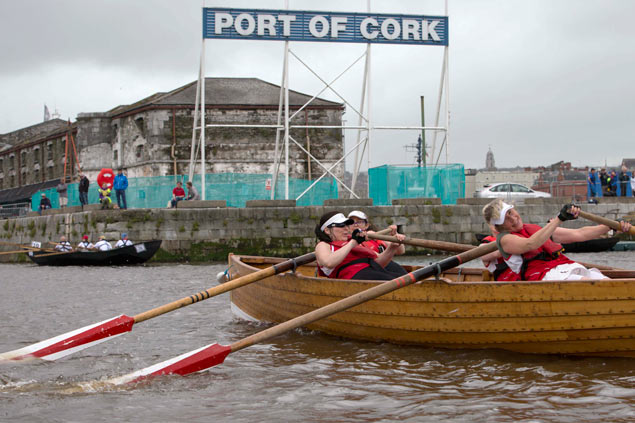
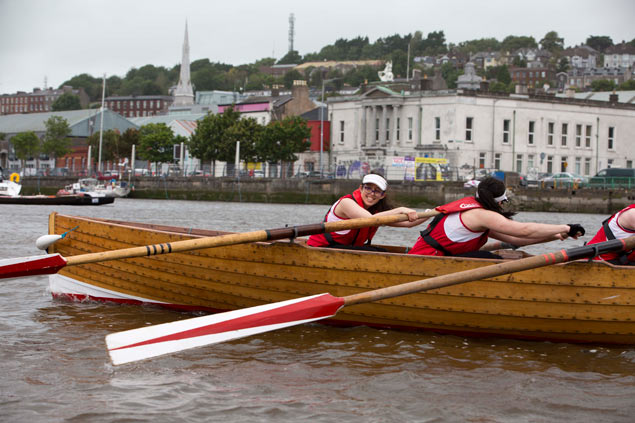 Female east coast racing skiff coming in to the finish line
Female east coast racing skiff coming in to the finish line
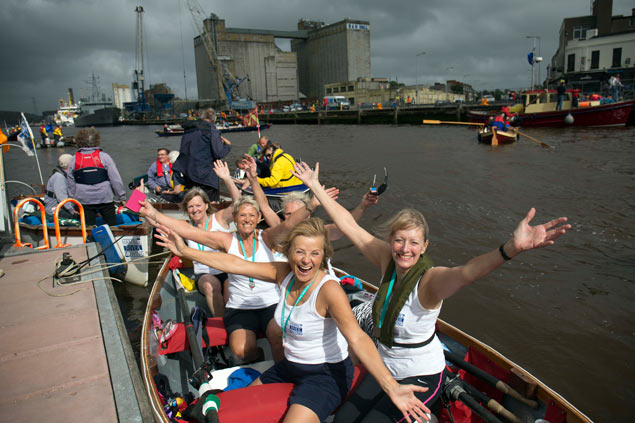 The Hamble River Rowing Club from the UK
The Hamble River Rowing Club from the UK
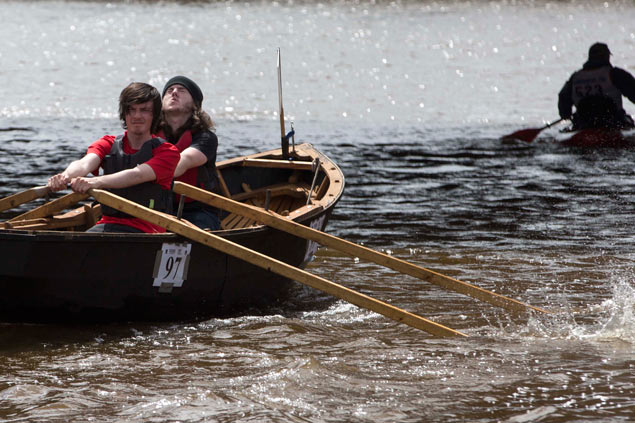 Meitheal Mara Challenge Cup Winners – An Doras Dearg
Meitheal Mara Challenge Cup Winners – An Doras Dearg
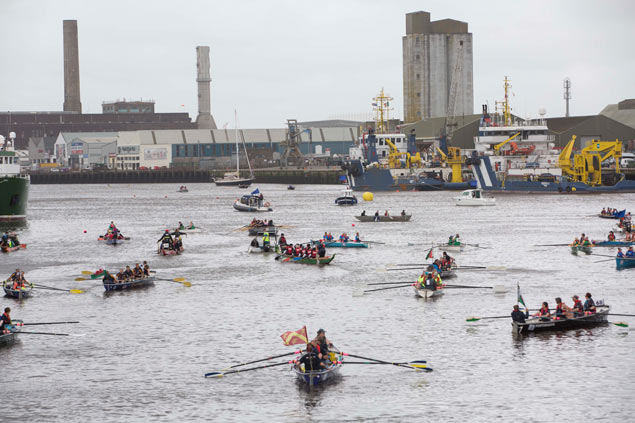 The Port of Cork Ocean to City Race
The Port of Cork Ocean to City Race
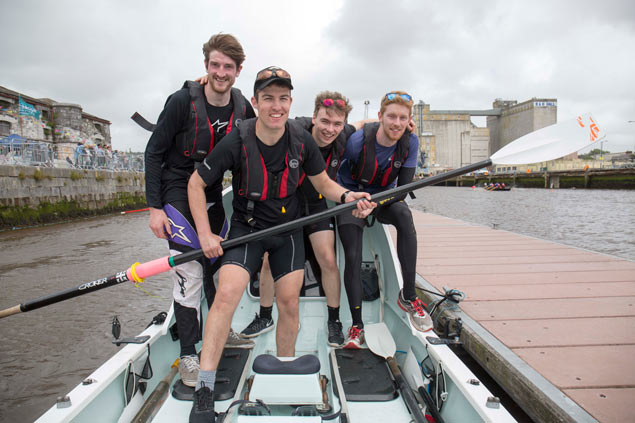 The Rowing Team Relentless
The Rowing Team Relentless
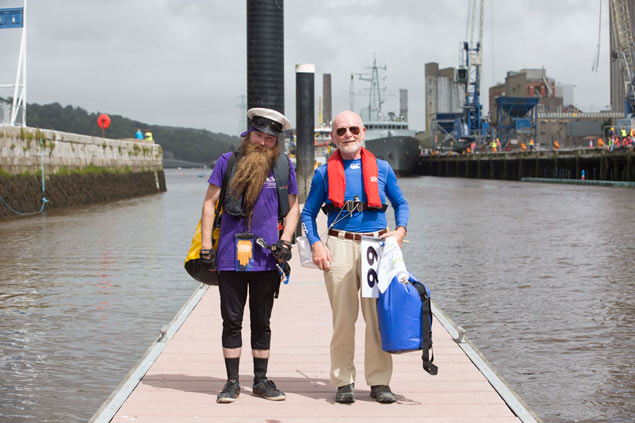 The Beardy Flies of Naomhoga Chorcai
The Beardy Flies of Naomhoga Chorcai
Results for The Sheltered River Course 2017 – Ocean to City – An Rás Mor
2-hd Currachs (single lap) - 1st Prize: 100, Brandon, Siog
3-hd Currachs (single lap) - 1st Prize: 105, Meitheal, Bádoireacht | Meitheal Mara
3-hd Currachs (double lap) - 1st Prize: 8, West Clare Currach Club, Orca
4-hd Naomhóga - 1st Prize & Cían Ó Sé Memorial Trophy: 17, Naomhóga Chorcaí, NC Noamhóg Workshop
4-hd Naomhóga - 2nd Prize & Never Again Prize: 16, Naomhóga Chorcaí, Saints and Sinners
East Coast Racing Skiffs - 1st Prize: 27, Bray Rowing Club, Bri Chualann
East Coast Racing Skiffs - 1st Female Crew: 25, Dalkey Rowing Club, Dalkey/Leary
St Ayles Skiffs - 1st Prize: 33, Dundrum Coastal Rowing Club, Tonn Ruray
Thames Waterman Cutters - 1st Prize: 57, Port of London Authority, Plashers B (UK)
Celtic Longboats - 1st Prize & 1st Veteran: 70, Aberdyfi Rowing Club, Aberdyfi Mens (UK)
Celtic Longboats - 2nd Prize & 1st Mixed: 65, Madog Yacht Club, Mad Dogs On Speed (UK)
ICRF One-Designs - 1st Prize & 1st Veteran: 80, Templenoe Rowing Club, Unlimited
ICRF One-Design - 2nd Prize: 78, Passage West Rowing Club
ICRF One-Designs - 1st Female/Mixed: 72, Kilmacabea Rowing Club, Kilmacabea Record Breakers
Sliding-Seat Singles - 1st Prize: 50, Albert O'Sullivan-Greene, Castletownbere Rowing Club
Quad Sliding-Seat Boats - 1st Prize: 85, Bantry Rowing club
Dragon Boats - 1st Prize: 89, Kaag Dragons (The Netherlands)
Dragon Boats - 1st Breast Cancer Survivor Crew: 88, Suir Dragons & Nore Dragons
Boat Builder of the Day: 45, Martin Murphy, Passage West Rowing Club
Boat of the Day - Charlie Hennessy Cup: 92, ‘’Lily’’, Flesk Valley RC
Community Boat Build Prize: 28, St Michaels Rowing Club, St Michaels Mens Crew
Meitheal Mara Challenge Cup: 97, An Doras Dearg, Bádoireacht | Meitheal Mara
Most Unconventional Route Prize: 68, Madog Yacht Club, Mad Dogs On Tour (UK)
Special Endeavour Award: 108, Blackrock Rowing Club Junior Crew, Team Passage
SUP - 1st Prize - #372 - Dermot Twomey
Sit-on-top (single Lap), 1st Prize / 1st Veteran, #392 Chris Coady
Sit-on-top (single Lap) 2nd Prize / 2nd Veteran #561 Jonathan Foley
Sit-on-top (Single Lap) 3rd Prize / Veteran #523 John O’Mahony
Sit-on-top (Single Lap) 1st Female / 1st Veteran Female #504 Aine Nugent
Expedition Kayak (Single Lap) 1st Prize #537 Liam Holland
Expedition Kayak (Single Lap) 2nd Prize / 1st Veteran #534 Nigel Ducker
Expedition Kayak (Single Lap) 3rd Prize / 2nd Veteran #260 Robert Wilkes
Expedition Kayak (Single Lap) 3rd Veteran #205 Garrett Casey
Expedition Kayak (Single Lap) 1st Female #531 Tracey Coughlan
Double Kayak (Single Lap) 1st Prize #906 John Harrington
Expedition Kayak (Double Lap 1st Prize / 1st Veteran #326 Tomas Walsh
Expedition Kayak (Double Lap) 2nd Prize #315 Adam Kennedy
Expedition Kayak (Double Lap) 3rd Prize / 2nd Veteran #334 Chris McDaid
Expedition Kayak (Double Lap) 3rd Veteran #304 Paul Holland
Expedition Kayak (Double Lap) 1st Female #329 Heather Clarke
Expedition kayak (Double Lap) 2nd Female #299 Sinead Frawley
Unlimited Kayak (Double Lap) 1st Prize #348 Dermot Hudson
Unlimited kayak (Double Lap) 2nd Prize #357 Paul Russell
Unlimited Kayak (Double Lap) 3rd Prize #351 Jim Morrissey
Double Kayak (Double Lap) 1st Prize #904 Ronan O’Connor
Whitegate Coastal Rowers Stage Cork Harbour Regatta
Whitegate Rowing Club's Coastal Rowing Championship Regatta took place on Sunday in the scenic eastern side of Cork Harbour.
The one day fixture ran as part of as part of the Coastal Rowing Association (CRA) 2017 season of regattas.
More on the Whitegate Coastal Rowing Facebook page here
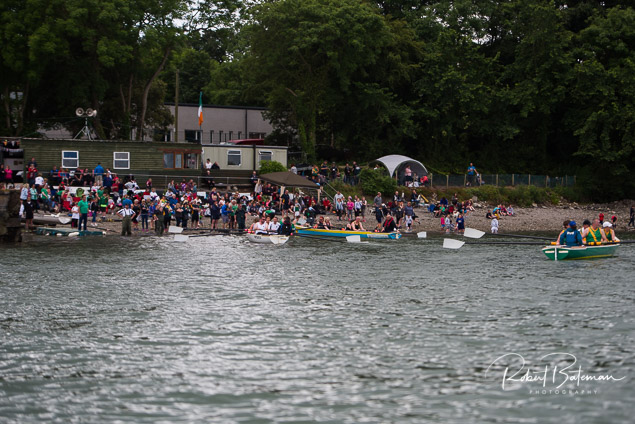 The scene at Whitegate Rowing Club as the coastal rowing championships get underway on Saturday. Photo: Bob Bateman
The scene at Whitegate Rowing Club as the coastal rowing championships get underway on Saturday. Photo: Bob Bateman
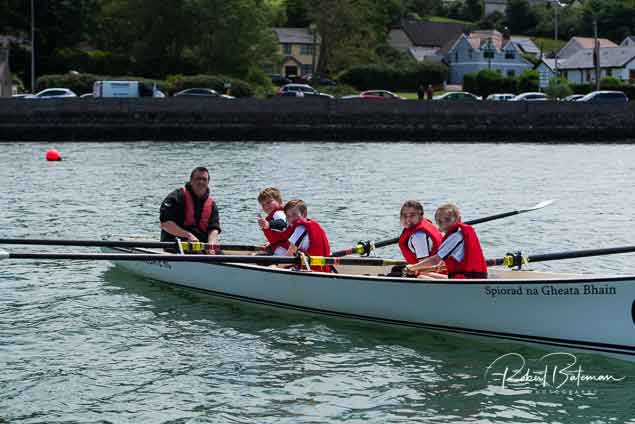 There was plenty of racing for both minors and seniors at Whitegate Photo: Bob Bateman
There was plenty of racing for both minors and seniors at Whitegate Photo: Bob Bateman
Irish crews were to the fore in last weekend's grueling 150km row across the Irish Sea from Arklow to Aberystwyth. The Vartry Rowing Club from Wicklow won both the overall Challenge Trophy and the Mens Race in just under 19 hours.
Dun Laoghaire's St Michael's Rowing Club won the ladies race in 26 hours in a determined and gutsy performance. The difficult conditions took its toll and only four out of the 13 starters finished with Dun Laoghaire's St Michael's Mixed team in their traditional timber skiff been unlucky to break their rudder just five miles from the finish.
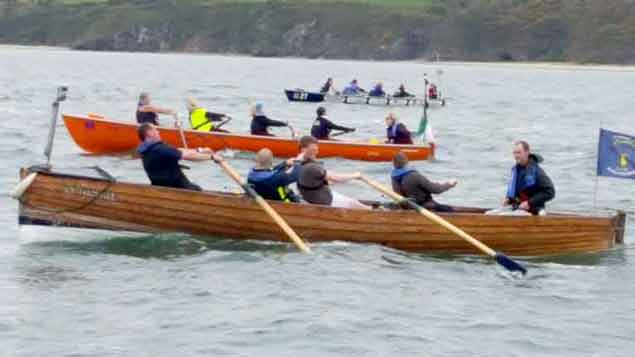 The St Michael's mixed team in the traditional skiff alongside the ladies team in the Celtic Challenge longboat
The St Michael's mixed team in the traditional skiff alongside the ladies team in the Celtic Challenge longboat
The ladies support boat, The Pamela, skippered by Eamonn and Alan Crosbie (National YC), was awarded the Spirit Of The Challenge trophy for sticking by the ladies all the way before heading straight back to Dun Laoghaire in a building breeze, eventually arriving home at 3am!
The next race takes place in 2019.
Irish Flying Fifteen National Champion Chris Doorly is back on the water early this season but before he takes up his usual role at the sharp end of a National Yacht Club keelboat he can be found, as shown in our exclusive photograph above, with a ladies crew from St Michael's Rowing Club in Dun Laoghaire Harbour. Doorly is training for the Celtic Challenge Irish Sea Rowing event which takes place from Arklow to Aberystwyth, Wales this coming Friday.
This test of endurance is 150km and can take 24 hours depending on weather. The club have a mens and womens crew consisting of three teams four who will operate a relay system.
The club are raising funds for both the RNLI and the upkeep of the local clubhouse which featured recently on Afloat.ie
RIB Needed For Charity Irish Sea Coastal Rowing Race
Dun Laoghaire's St Michael's Rowing Club is participating in a Charity Irish Sea fundraising race for the RNLI over the May Bank holiday but one of its support RIBs has pulled-out. The club has put a shot-out for a replacement to Afloat.ie readers.
The RIB must be over 5.5 metres in length.
The club says it will cover associated fuel and crew costs. Full details in the poster above that is also downloadable below in a larger format.
St Michael’s Rowing Club, Dun Laoghaire, launched the 2017 coastal rowing season with the official move back into refurbished facilities
Councillor Mary Fayne joined the committee and members of St Michael’s Rowing Club for the official opening of their newly refurbished facilities at the Coal Harbour boatyard in Dun Laoghaire last Saturday.
The coastal rowing club, whose growing membership of men women and children row the heritage class East coast skiffs, is based out of a stone archway. Up until this year, this boatshed had a leaky roof that caused great difficulty for the maintenance and upkeep of these historic boats. Along with providing a watertight home, the boatshed now has hot water, improved lighting and power, storage for oars and equipment, and other minor improvements.
These repairs were made possible thanks to a grant from the Sports Capital Programme and the on-going fundraising efforts of members. This growing club hopes that this is a stepping stone on route to full clubhouse facilities in line with other watersports in the harbour and their sister rowing clubs along the coast.
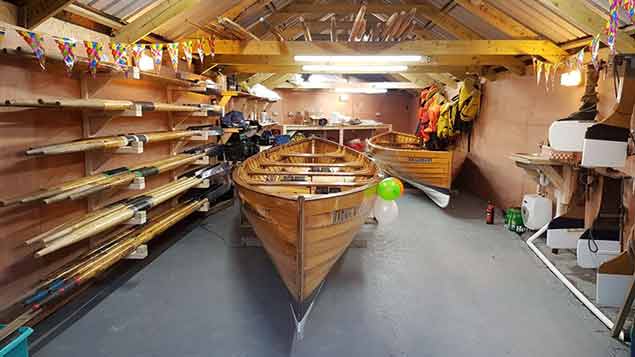 The club's beautiful racing skiffs at home in the refurbished boatshed
The club's beautiful racing skiffs at home in the refurbished boatshed
Last season saw a very successful year for the club, with membership at full capacity, a growing youth section, and the Senior Men’s crew lifting the overall East Coast Rowing Council trophy in their category, and the club placing second overall in the Junior Shield.
The club is holding a further fundraiser race night in Baker’s Corner on Saturday 1st April, and all are welcome – there will be betting, auction and raffles on the night, with a prize pot for the owners of winning horses, with thanks to sponsorship and support of local businesses including Grandstand Sports, K&K Windows, Newtownpark Avenue Service Station, Brady’s Family Ham, Regan Roofing, Frank Keane Volkswagen, Typecraft and Dublin Bay Cruises.
The club will also be doing bag packing at SuperValu supermarket in Blackrock on Saturday 10th June, and all support is greatly appreciated
New Coastal Rowing 'Wild Atlantic Challenge' on Kenmare Bay
WAC (Wild Atlantic Challenge) Kenmare is a new coastal rowing event taking place on Saturday, 13th May on Kenmare Bay. It is a multi–craft rowing event for competitors of all abilities, with a distance to suit your crew and boat.
Whether you are a 30km Titan or a 5km fledgling, the organisers are inviting all comers to experience the challenge of the bay and the beauty of the sheltered Kenmare coastline, encompassing both the Beara and Iveragh peninsulas.
'We would also very much welcome Master or recreational rowers to make this a great event', says organiser Mike Donovan.
More details attached on the PDF flyer for download below.
East Coast Rowing Gets Extended 2017 Fixtures Calendar
This week sees the launch of the fixture list for the East Coast Coastal Rowing regatta circuit 2017. Crews of men, women, and children from Skerries in the north to Arklow in the south will compete for the individual regatta medals and trophies, for the championship league positions, and for the overall club shields. Fixtures can be found below.
To facilitate the recent growth in the sport, this year sees the season being extended earlier, into mid-May, and later, into mid-August. The 139th Wicklow Regatta will be held on the August Bank Holiday Monday, but in a break with tradition, there will be an official regatta after this fixture, hosted by Dalkey Rowing Club.
Regattas are held largely on Sundays on the 'home' courses of each club. All regattas feature races from Under 12s through to Senior Men and Senior Women, with 5-12 boats per race and up to 13 races spread over the afternoon.
This fixture list arises off the back of Sunday's East Coast Rowing Council AGM, where exciting prospects for the season ahead were discussed. Skerries Rowing Club’s regatta will be held in conjunction with the Skerries Water Festival and St. Michael’s Rowing Club of Dun Laoghaire will be collaborating with the Volvo (sailing) regatta and the Dun Laoghaire Harbour bicentennial. The newly formed Fingal Rowing Club was also admitted to the ECRC.
Last year was a hugely busy and successful year on the East Coast, with the Wicklow Regatta beating the all-time record for entries and 125 crews. The two Ringsend clubs managed to share the overall spoils between them, with St. Patricks taking the Senior Shield, and Stella Maris taking both the Junior Shield and the Overall Shield.
2017 events and regattas
Arklow Rowing Club, Arklow Sun 21 May
Skerries Rowing Club, Skerries Sun 18 June
Bray Rowing Club, Bray Sun 25 June
St. Michael’s Rowing Club, Dun Laoghaire Sun 9 July
Stella Maris Rowing Club, Ringsend Sun 16 July
St. Patrick’s Rowing Club, Ringsend Sun 30 July
Greystones Rowing Club, Greystones Sat 5 August
Wicklow Rowing Club, Wicklow Mon 7 August
Dalkey Rowing Club, Sandycove Sun 13 August
East Wall Water Sports Club To Launch New Clinker Rowing Skiffs
East Wall Water Sports Club will launch two new clinker–built rowing boats next month. The hand–crafted punts were built with the support of Dublin Port Company and Dublin City Council.
East Wall Water Sport’s was founded in 1981 provides a wide variety of water sports activities to the local community. The new rowing boats will add to their growing fleet of vessels, which promotes coastal rowing on Dublin’s north side, according to the club's Martin Whelan.
'With the help of many other volunteers from the East Wall skiff rowing club the project has finally coming to an end. It’s wonderful to see at first hand the boatbuilding skills which our Viking ancestors handed down to us, still in use today', said Whelan.
The project began in October 2015 and the two clinker built boats, are to be blessed and launched on Sat 1st Oct at 12 noon.
With the growing popularity of rowing within the club, the skiff rowing section saw the need for these new vessels. These boats will primarily be to teach younger children the skills of rowing.
The current project is just one of numerous projects completed by this partnership over recent years that keeps alive an age old tradition of wooden boat building.
To date the club has refurbished two 26 ft rowing skiffs and built currachs and naomhogs in their workshop. Dublin Port Company provided free of charge the services of their resident shipwright Patsy Whelan and his apprentice Stephen, on a weekly basis to supervise the project.
East Wall Water Sports Club through their skiff rowing section and currach section now provide great rowing experiences for all ages at a very minimal cost. The club is open to all, young and old, and a friendly atmosphere is always maintained.




























